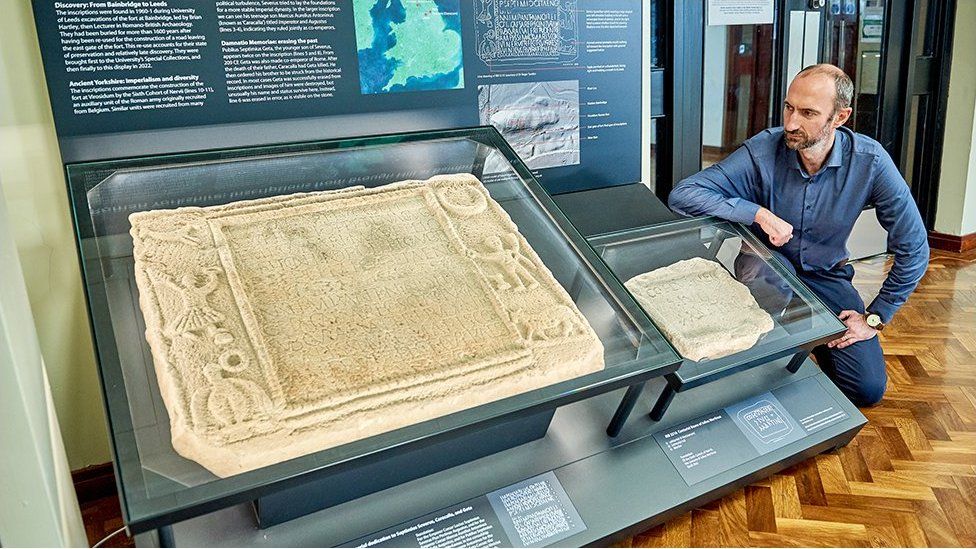University of Leeds: 'Superstar' Roman inscription stones on display
- Published

One of the longest ancient inscriptions ever discovered in Britain is to go on display for the first time.
Two sandstones were uncovered at Bainbridge in Wensleydale and record the Roman army's construction of a fort on Brough Hill in the 3rd Century.
They were found in 1960 but have been in storage ever since as one weighs 600lbs (272kg) and had to be kept in a basement at the University of Leeds.
A new display has been set up at the university's Michael Sadler building.
Dr Samuel Gartland, a lecturer in the School of Languages, Cultures and Societies, said a crane had to be brought in to move them to their new location.
"The larger stone really is a superstar inscription, one of the longest and largest ever to be found in ancient Britain and unlikely to ever be surpassed as a record of the world of Roman Yorkshire," he said.
"Appropriately enough for our launch during Black History Month, the stones tell of a period where Yorkshire came under the rule of the first African emperors of Rome, as well as the dynastic jostling and assassinations in the imperial family."
The stones were initially built into the wall of a barracks building but they were later reused as foundations for a Roman road and spent much of the past 2,000 years upside down in a field.
When they were unearthed by archaeologists soldiers from the Royal Engineers were brought in to help transfer them to the university.
The university said the stones had attracted academic interest, with a team from the University of Glasgow hoping to scan them with specialist laser equipment to try to capture the original colours.
Translation of inscription
For the Emperor Caesar Lucius Septimius Severus Pius Pertinax Augustus, and for the Emperor Caesar Marcus Aurelius Antoninus Pius Felix Augustus, and for Publius Septimius Geta most noble Caesar, in the consulship of Our [two] Lords the Emperor Antoninus for the second time and Geta Caesar [205]; the Sixth Cohort of Nervians which Lucius Vinicius Pius, prefect of the said cohort, commands, built [this] barrack-block, under the charge of Gaius Valerius Pudens, senator of consular rank
Source: Roman Inscriptions of Britain
Follow BBC Yorkshire on Facebook, Twitter and Instagram. Send your story ideas to yorkslincs.news@bbc.co.uk or send video here.
Related Topics
- Published3 September 2022
- Published14 April 2021